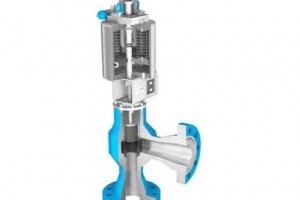Insulation material is used in different scenarios to prevent heat loss of ingress of heat. Insulation thickness required in different scenarios depends on -
- Objective of using insulation,
- Temperature to be maintained for the insulated material,
- Type of insulating material used etc.
Piping insulation for hot water and steam
Specifically in case of utility piping with hot water or steam service, insulation is used to prevent the heat loss to the surroundings.
Another objective is to prevent accidental injuries in case of any of inadvertent contact with the piping surface.
Depending on the selected insulation material, temperature of the service, flow rate etc. insulation thickness required to prevent any heat loss can be precisely determined by simulating the heat loss with the process design software.
For a quick calculation of minimum insulation thickness requirement, you can also follow this short tutorial for calculating insulation thickness required for a pipe.
Recommended piping insulation thickness
Based on insulating material with thermal resistivity in the range 4 - 4.6 ft2 hr oF/ Btu, hot water or steam piping should be insulated with
| Nominal Pipe Size NPS (inches) |
Recommended minimum Thickness of Insulation (inches) | |||
|---|---|---|---|---|
| Temperature Range (oC) | ||||
| 50 - 90 | 90 - 120 | 120 - 150 | 150 - 230 | |
| Temperature Range (oF) | ||||
| 120 - 200 | 201 - 250 | 251 - 305 | 306 - 450 | |
| Hot Water | Low Pressure Steam | Medium Pressure Steam | High Pressure Steam | |
| < 1" | 1.0 | 1.5 | 2.0 | 2.5 |
| 1 1/4" - 2" | 1.0 | 1.5 | 2.5 | 2.5 |
| 2 1/2" - 4" | 1.5 | 2.0 | 2.5 | 3.0 |
| 5" - 6" | 1.5 | 2.0 | 3.0 | 3.5 |
| > 8" | 1.5 | 2.0 | 3.0 | 3.5 |
Note this the recommended minimum insulation thickness. Depending on the minimum atmospheric temperature, the minimum thickness should be verified to be sufficient. This tutorial calculation can help to confirm the same.





